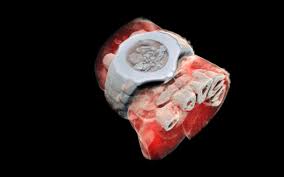
Breaking News
 Oupes Guardian "Bargain" Solar Generator: 6000W 120/240V
Oupes Guardian "Bargain" Solar Generator: 6000W 120/240V
 The Drumbeats Of War Are Getting Louder
The Drumbeats Of War Are Getting Louder
 THE WESTERN WORLD HAS DESTROYED ITS MEN
THE WESTERN WORLD HAS DESTROYED ITS MEN
 Imagine All the People: Food, Freedom and What It Means To Be Human
Imagine All the People: Food, Freedom and What It Means To Be Human
Top Tech News
 Perfect Aircrete, Kitchen Ingredients.
Perfect Aircrete, Kitchen Ingredients.
 Futuristic pixel-raising display lets you feel what's onscreen
Futuristic pixel-raising display lets you feel what's onscreen
 Cutting-Edge Facility Generates Pure Water and Hydrogen Fuel from Seawater for Mere Pennies
Cutting-Edge Facility Generates Pure Water and Hydrogen Fuel from Seawater for Mere Pennies
 This tiny dev board is packed with features for ambitious makers
This tiny dev board is packed with features for ambitious makers
 Scientists Discover Gel to Regrow Tooth Enamel
Scientists Discover Gel to Regrow Tooth Enamel
 Vitamin C and Dandelion Root Killing Cancer Cells -- as Former CDC Director Calls for COVID-19...
Vitamin C and Dandelion Root Killing Cancer Cells -- as Former CDC Director Calls for COVID-19...
 Galactic Brain: US firm plans space-based data centers, power grid to challenge China
Galactic Brain: US firm plans space-based data centers, power grid to challenge China
 A microbial cleanup for glyphosate just earned a patent. Here's why that matters
A microbial cleanup for glyphosate just earned a patent. Here's why that matters
 Japan Breaks Internet Speed Record with 5 Million Times Faster Data Transfer
Japan Breaks Internet Speed Record with 5 Million Times Faster Data Transfer
3D color X-ray machine heads for trials

But this new scanner adds color and a third dimension, creating high resolution, cutaway 3D models that can diagnose bone fractures and monitor healing. New Zealand-based Mars Bioimaging (MBI) has now conducted a feasibility study of the machine, with a larger international trial set to begin soon.
In a traditional CT scan, X-rays are beamed through the target area of the body, and the radiation is absorbed more readily by denser tissues like bone, while passing more easily through softer tissues. The end result is that high contrast black-and-white image we know so well.
But the new technology collects more nuanced data about how the X-rays are absorbed by different tissues. It's built around a chip called the Medipix3, which tracks every photon that hits every pixel on the sensor, and processes their interactions with various atoms in the body. By doing so, it can determine the density and composition of those tissues more accurately.

 Advanced Propulsion Resources Part 1 of 2
Advanced Propulsion Resources Part 1 of 2

